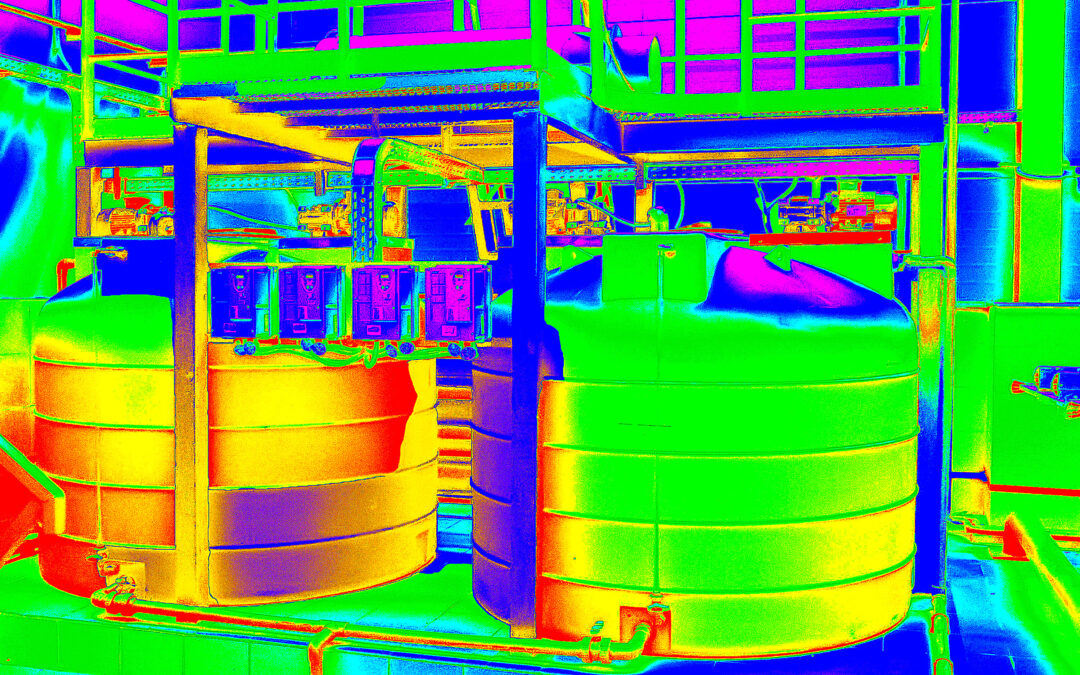With tremendous emphasis placed upon the sophistication of today’s thermal imagers, it could be easy for thermographers to forget the basics of the craft. Regardless of imager age or sophistication, there are several basic concepts that can vastly increase the accuracy and success of an infrared inspection.
1. Select the proper spectral response imager for the application.
2. A clear line of sight to the target is required with no obstruction of the imager lens.
3. Imager optics must be clean and calibrated to the imager being used (see calibration sidebar below).
4. Target should be dry and at a stable temperature.
5. Imager focus is imperative for accurate diagnosis and temperature measurement. Be sure to focus
the imager, as well as the viewfinder.
6. Knowledge of the construction, operation, and characteristics of the system being inspected is vitally
important in anticipating thermal patterns and performance.
7. Adverse atmospheric conditions, such as wind, humidity, or solar reflection and solar loading should
be avoided.
8. For electrical and mechanical equipment, the systems must be energized and under load; for structural
inspections, a delta T of 10 C (18 F) is desired.
9. Discriminating small temperature differentials across targets with low emittance values can prove to
be quite difficult.
10. Whenever it’s possible to do safely, cross-reference observed infrared temperature values with accurate
contact-temperature readings.
AN IMPORTANT NOTE: When performing any infrared inspection, be certain to take all necessary safety precautions, and always work safely.
SIDEBAR: REGARDING CALIBRATION OF IR EQUIPMENT
A Simple Technique For Checking The Accuracy Of Imaging And Non-Imaging RadiometersInfrared radiometers must be within calibration to accurately measure temperatures. Traditionally, thermographers have periodically sent their equipment to the manufacturer for calibration. For some, this process can take several weeks and be rather expensive. As an alternative, savvy thermographers can check the calibration of their instrument(s) quickly and easily using some commonly available items.
Performing this check requires at least two targets, each with a known temperature and emittance. A simple solution is to use a container of ice water and a container of boiling water with a coupon of Scotch PVC electrical tape affixed to the exterior surface of each container. The size of both targets must exceed the spot-measurement size of the instrument being calibrated. Container temperatures may be ascertained with a thermometer, thermocouple, or contact radiometer.
Once the two targets have been prepared, use the following procedure:
1. Turn radiometer on and allow it to stabilize to room temperature.
2. Set radiometer perpendicular to target surface.
3. If possible, set radiometer inputs for distance, humidity and air temperature.
4. Aim, focus, and calculate Reflected Temperature.
5. Set radiometer emittance control. Scotch 191 tape = 0.97 LW or SW. Ice = 0.98 LW; 0.93 SW.
6. Using the subject radiometer, measure temperature of target. For the ice-water container, measure
temperature of the ice cubes. For the hot-water container, measure temperature of the tape coupon.7. Compare the radiometer’s value with a contact-temperature reading for each target to ensure that
the instrument is within spec.A heated blackbody simulator can be used to check instrument calibration at higher temperatures. Because radiometer calibration is not user-adjustable, it will be necessary to return an instrument to the manufacturer if it has been found to be out of spec.
EDITOR’S NOTE:
This Article Is Based On
The April 5 and May 3, 2021, “Tips of the Week”
On The IRINFO.org Website.
CLICK HERE TO ACCESS THE 2021 ARCHIVE
ABOUT THE AUTHOR
Jim Seffrin, CMRP, has been an Infraspection Institute Certified Infrared Thermographer since 1984. A co-founder of Jersey Infrared Consultants and a practicing thermographer with 35+ years of experience as an infrared consultant, he was appointed Director of Infraspection Institute in April 2000. For information on a wide range of topics related to infrared thermography and associated training and certification, visit IRINFO.org and/or infraspection.com, or email jim@infraspection.com.
Tags: reliability, availability, maintenance, RAM, infrared thermography, IR thermography, infrared cameras, thermographic imagers, imaging radiometers, infrared inspections, infrared temperature measurement, IR equipment calibration



